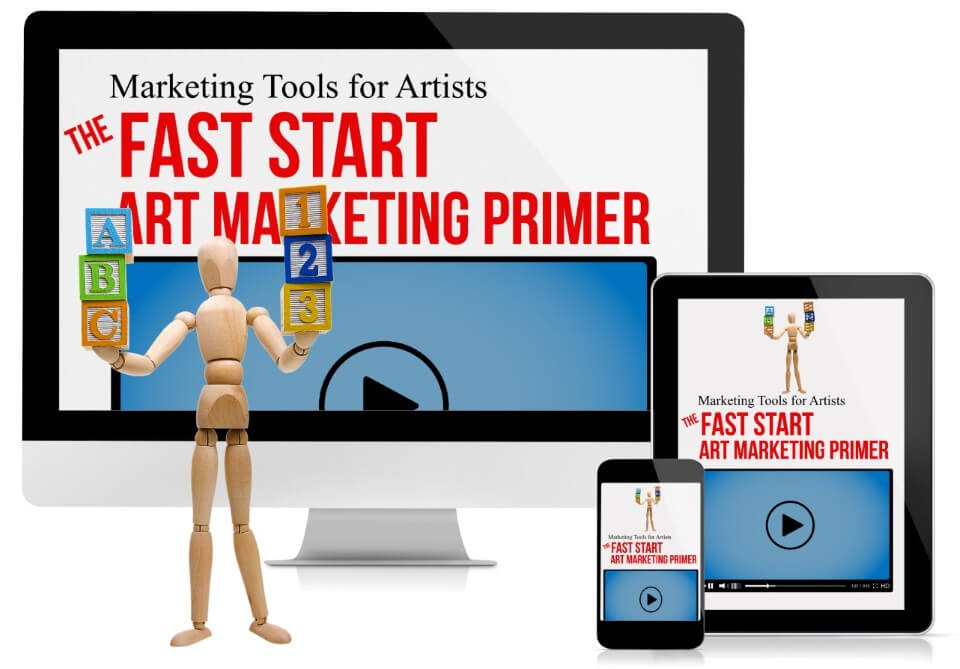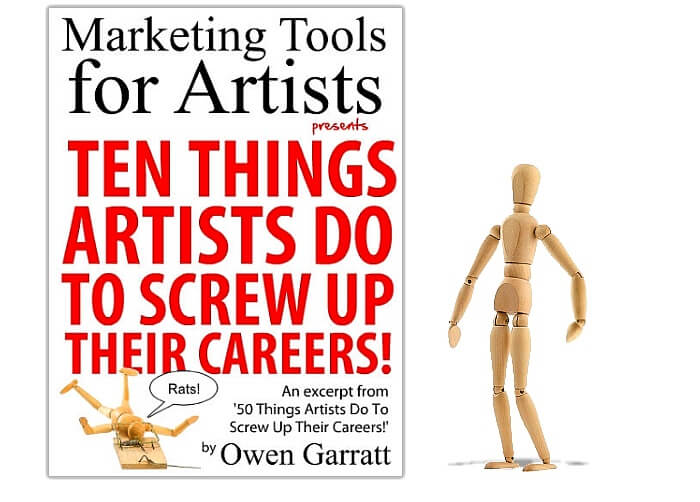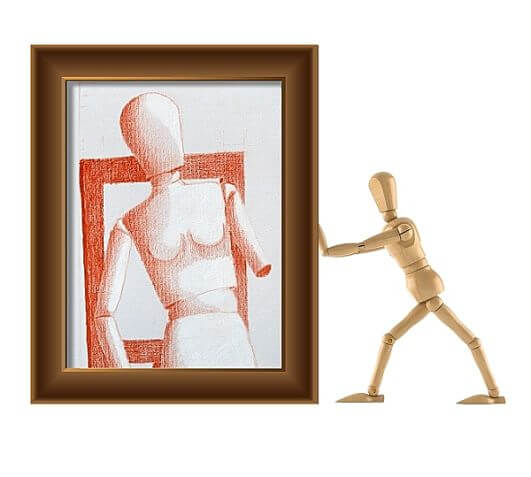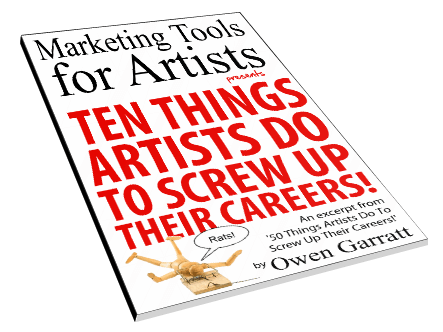Should You Sell Your Art Framed?
by Owen Garratt | The Business of Art
I t always seems so expensive doesn’t it? And you likely have trouble finding ways to offer a reasonable selection.
Most artists like the idea of making extra profit, but people seem so shocked by the prices that most artists end up discounting it all away!
There’re two questions there, the other dealing with pricing and discounting, which we’ll loop back to.
Believe it or not, one of my most successful promotions that I run is free framing!
With very few and specific exceptions, I don’t sell anything unframed, and I encourage all artists to move in that direction.
- Your art looks better
- Your art is protected
- It can be an excellent profit center.
There’re a few things you need to keep in mind when undertaking framing. It’s expensive (but you knew that), however, there’s a heck of a lot of margin in framing and with a little planning and insider knowledge, you can turn things in your favor.
FIRST: It’s going to be dashed hard to get a gallery or frame shop to do all of your framing for you at a price that allows you to make a decent profit. We’ve always done it ourselves. We did it at home in our garage until 2003 when we opened our gallery.
You can buy an Alto matcutter for around $100 (we did thousands of prints on an Alto!), get your frames pre-joined and do the assembly yourself, or you can rope in a spouse to help. It’s really quite simple and once you get going it’s possible to frame 3 or 4 dozen pieces in a day. You’ll wonder just what galleries are charging you so much for!
A second alternative is to find a home/hobby framer. I’d recommend that you take care of the materials and pay them separately a flat rate for assembly on a per-piece basis.
SECOND: Pick ONE style of frame and mat. No options. That’s hearsay to some, but choices become daunting for clients. If you choose something that’s nice, clients don’t question it at all; they’re actually GRATEFUL that the framing is done for them! The fact that The Artist picked the framing reaffirms to them that it must be The Right Framing, which relieves them of the worry of picking the wrong framing.
Plus it saves them the hassle of getting it done. Trust me, they’d much rather have you do it in advance than run around doing it afterward.
I have my own exclusive frame made for me by Larson-Juhl and they may not like me spilling the beans on this, but they charge me an ‘off the shelf’ price for it! I do a good volume, but it also gives me a tremendous marketing advantage; I MUST be someone if I’ve got my own framing line!
How can you pick one style to cover everything?! Frankly, because I work strictly in pencil, it’s simple for me, and I commiserate with artists working in color. Still, try to do the barest minimum of options. Perhaps you stick to one type of frame, but have 2 or 3 different mat colors that can be used in a couple of combinations.
THIRD: Maximize your materials to minimize your cost. Pay attention to your sizes! Most of my prints are sized so that the mat size is 16”x20”, which means that I get four prints framed for each matboard. But if I made my stiff ¼ inch bigger all around, my mat costs would quadruple!
This is where some artist start getting haughty about the ‘limitations’ standard sizing or limited choices on the framing would have on their creativity. Bah! The limitations are liberating because it removes the guesswork. I don’t need to go through the whole process about what size and ratio to make my next drawing: that’s already been decided.
Also, my clients and collector’s really appreciate that my stuff is all the same size because it displays SO well as a set!
Whatever you do, don’t just frame it with scraps! It’s a false economy. In an effort to save money some artists rummage through the bargain and discontinued bins at shops and take whatever they can get so long as it’s cheap.
It hardly enhances the art, there’s usually damage to the frame (which undermines your professionalism), things are rarely the right size –so you end up spending time and effort MacGyvering something, and if you have a client that wants a piece framed like the last one they bought, you’re pooched.
If you take the proper approach you’ll have a spectacular product at a price that’s even lower than the scrap bin.
With a little bit of planning, framing can be one of your biggest profit centers!
The fact that The Artist picked the framing reaffirms to them that it must be The Right Framing, which relieves them of the worry of picking the wrong framing!
There’s no time like the present to check out The Fast Start Art Marketing Primer!
Check out the Fast Start Art Marketing Primer!
“Just a note to say thanks to Owen for his courses. It has already changed my whole concept of marketing my work and makes me actually feel in control of my future. Thanks Owen!”
Tony Alderman
Durham, NC
“I’ve gotten great value out of this course. It really speaks to the artist in a no B.S. way that clears the mental clutter, and gets you to pay attention to what you really need to get the ball rolling.”
Fay Wyles
San Clemente, CA

“It was light-hearted, it had charm and humour and kept me engaged the whole time! I loved it!”
Suzi Campbell
Melbourne, Australia
“The first or second lesson got my money back in multiples already. So brilliant…you shook me!”
Marta Spendowska
Domino, OK
“Owen’s course literally saved me from a slippery path that I would probably have never recovered from.”
Gregg Arnold
Kingman, AZ







Hi Owen,
Awesome article!
Great Meat & Potatoes + Veggies & Fruit.
As a Professional Picture Framer for almost 30 years I can absolutely agree about how and why framing your own stuff is a GREAT profit margin.
Those 16 X 20’s work perfect!
Thanks again for your encouragement to all of us to go “just a little” beyond our comfort zone to try NEW things.
Please tell “The Colonel” that this is a great article.
Loved it.
Sincerely,
Lisa Archer
P.S. Continued Blessings on you, your ” Commanders”, the Elves & Trolls and ” The Damn Cat”
🙂
Thanks for the kind words Lisa!
I definitely will tell The Colonel that the article has been praised, maybe even lauded, because I wrote it! 🙂
I like the idea of selling print with frame, I been looking into it lately. However, I’m stuck at what size should I be set on. Did you do a test on which size is favored by your client?
The original of most of my painting are 24×18. But if I print it at that size the framing can go up to 30+ inch width! Which is really big and expansive, I’m not confident that most people are ready for something that big and expansive, even though I think a framed painting with that size looks impressive and spacious.
How do you determine what’s the good size for your print? And if it doesn’t work.. is it bad to change your dimension after you already put it out?
Thanks!
No, I didn’t test at all..the decision was entirely made to maximize our use of materials. We have virtually zero waste. I suppose if it didn’t work we would have re-evauluated, but things have been doing well for nearly 20 years.
As of now, my originals are usually 14 x 20, and the images come down to 9 1/4 x 13 1/4 in the prints. We frame these as 16×20, and the outer measurements of the frames is 20×24.
This may or may not work for you. Yes, I do get some clients who preferred they were bigger to fit a given space, to which we suggest that – as they are all the same size and framed identically – they hang beautifully together in sets, which is PERFECT for larger spaces!
We’ve also found that the “my walls are full” excuse really IS an excuse for some people, but the 20×24 fits well on those smaller hallway walls between rooms that usually don’t get a nice artistic treatment…until now! 🙂
Thanks Owen, it’s a lot of work to set things up before I’m ready to flip the switch. At one hand I’m eager to start, on the other hand I want to be really ready and sure what am I going to do. changing things around (size, price.. etc) AFTER starting business doesn’t feel like a good idea, as it might effect my positioning…
Got an art walk coming up this Friday, I’ll put some of the tips you mentioned in the course into practice, will let you know how it goes! =)
Please do!
I’m a big proponent of ‘if you don’t have the time to do it right the first time, when on earth are you going to have time to fix it?!’
HOWEVER – we must balance this against not doing anything at all! The world is full to brimming with people “waiting” for things to be “just right”…but that’s taking it and making it procrastination.
Something is better than nothing!
First; Thank you for your article! Started researching pursuing selling my art and your article was of great help in decision making.
Secondly. Your reply is of great help and reassures with acknowledging the difference between not truly ready to jump into it and when it’s procrastinating.
Great post!
It helped me put my venture in focus.
thank you.
Thanks Lee! 🙂
Hi Owen
I found your information so helpful being a new artist and just at the point of wanting to sell my originals and limited edition prints. To frame or not to frame was a big consideration and because of you I’ve decided to frame. I’m still undecided tho on size as I love big square framed art myself but I see your point on price to frame and client buying a “set” of framed pieces if bigger is required. Good thinking. I live in Australia and I’m now looking for representation or a way to get my work out there. Any suggestions on that? Cheers my friend. Julie Louise Worthy. Gold Coast Queensland.
Hey Julie! Thanks for the kind words! As to your question, well, you’re in the right place! 😉
Thanks for pointing out that some of the benefits of getting your art framed are that it can help it look better and can help protect it as well. My sister is thinking about selling some of her art because people have been asking her to do it for a while now and she thinks that it would be a good way to make some extra money. I think it would be smart for her to find an art framing company to work with that knows what they are doing so that she can make sure everything will look good and that it will be protected correctly too.
The real trick will be to get it at a low enough cost to make the math work. Invariably, I’ve found that artists that make this work do the final assembly themselves. That is, they buy the materials at wholesale already cut to size, then they do the mounting and assembly themselves (or a souse, as in my case!) 😉
I appreciate your article on selling framed art, as I am a start up and lazy to boot. As a former sales and marketing person I found your suggestions to be sound and believe would be very productive. You mentioned you have a gallery. Do you sell others work, if so where are you located and how do I contact you with samples for acceptance.
Hey Alan!
Nope. Never have sold other’s work. For two very practical reasons… 1) It would undermine my own presence. “If this Owen fella is so good, how come he has to have all this other artwork in here?!” and 2 (the Tough Love reason) You’ve got to do your own heavy lifting. A personal trainer doesn’t teach you a bunch of stuff just to step in and lift the weight for you too! 😉